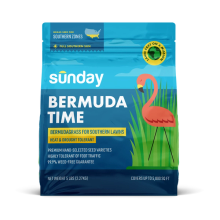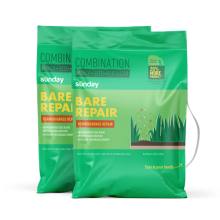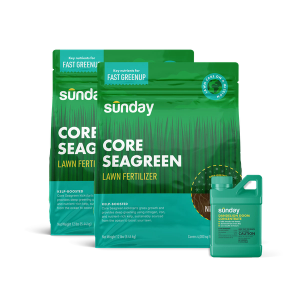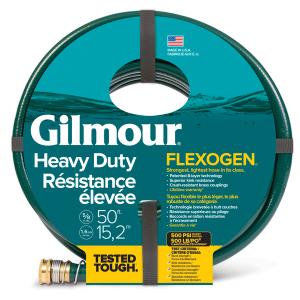Bermudagrass is a medium to fine-textured warm-season grass that provides a dense, medium to dark lawn. It grows aggressively, which allows it to establish quickly, outcompete most weed species, provide excellent wear tolerance, and recover rapidly from wear or disease. The downside of these traits is that bermudagrass can also be invasive and hard to control and will grow into flowerbeds and other landscaped areas. It also requires more regular maintenance than some other warm-season grass species.
Is bermudagrass right for my lawn?
Bermudagrass can be grown in Zone 7 and higher. Within this range, it will tolerate some cold, going dormant and losing its green color until the temps increase. Highly tolerant of wear, it is a good choice for lawns that see a lot of use. It tolerates most soils except for poorly drained ones and can also tolerate drought and salinity. Because it does not tolerate shade, it's not the right choice for lawns without a lot of direct sun exposure.

Bermuda Time Common Bermudagrass Seed
- 5 lb. bag covers 5,000 sq. ft.
- For southern climates
- Full to moderate sun
- Low water needs

Bare Repair Bermudagrass (2-Pack) | Lawn Patch Kit | 3-in-1 Repair
- 3-in-1 lawn patch repair
- Premium seed, mulch & nutrients
- For sunny bermudagrass lawns
- 1 bag covers up to 65 sq. ft.
Establishing a bermudagrass lawn
Bermudagrasses are typically established vegetatively by planting sprigs, sod, or plugs. Only common bermudagrass cultivars can be established by seed. Except for the warmest parts of the country, the best time to establish a bermudagrass lawn is when the weather is warm enough to allow it to establish before cooler temperatures set in. In the warmest parts of the country, such as southern Florida, a bermudagrass lawn can be established any time of the year.
New lawns have a greater irrigation need than established lawns, and therefore it's important to irrigate frequently and lightly until a viable root system takes hold (usually about 3 to 4 weeks after sodding). For example, multiple short irrigations throughout the day for a week to 10 days following planting helps the grass begin establishing a root system without drying out. Following the first week, irrigation can be reduced to daily for a week or so, and reduced further to 2–3 times a week until established (usually about 3 to 4 weeks if using sod).
Caring for your bermudagrass lawn
Fertilization
Bermudagrass has a medium level of nutrient needs. Lawns should be fertilized after the turning fully green in the spring or can be fertilized year round in those places (like south Florida) where it does not go dormant during the winter. In areas where the soils have a high pH (>7.0), yellow leaf blades may indicate an iron or manganese deficiency.
Mowing
Mow bermudagrass when it is between 1–2 inches tall, making sure not to remove more than a third of the total leaf blade with any one mowing. You may have to mow several times a week to maintain bermudagrass under 2 inches during periods of rapid growth.
Watering
Established lawns should be watered as needed to maintain green color. However, if allowed to go dormant during drought, it will revive and resume its green color and begin growing once watered sufficiently.
Pests
In sandy soils, bermudagrass can be invaded by sting-nematodes, especially during hot, dry periods. Yellowing and general thinning of turf can be signs of damage from these nematodes. Mole crickets can also be a major insect pest of bermudagrass.
Diseases
Bermudagrass is susceptible to brown patch and dollar spot.
Weeds
Because of the density of bermudagrass lawns, they typically do not have extensive weed issues.
Ready to get growing? With a custom plan, you'll get personalized products and one-on-one support for your bermudagrass lawn.
Ready for a custom plan?
Our lawn engine uses satellite data to map out your lawn size and determine things like average rainfall, common weeds, and pest activity.


















